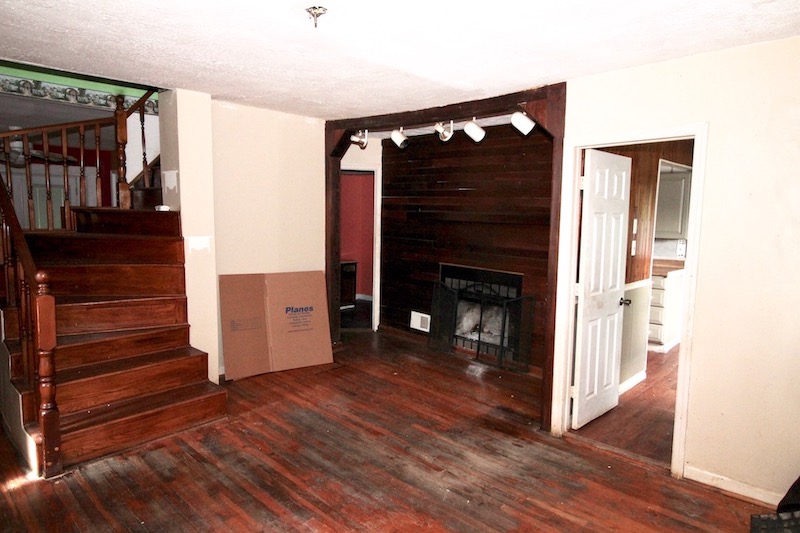Getting an appraisal on your property can be such an exciting, yet nerve wracking time!
As a real estate investor having a favorable appraisal is an important part of the formula.
Why it matters:
Our strategy is to buy, rehab, rent, refinance, and repeat. Also known as BRRRR.
We typically pay cash for dilapidated properties, then build equity though renovation and hard work, get them ready for rent, and refinance them to pull out our cash so we can do it again!
*It is important to note that I strongly feel that you make your money going into each deal. Before purchase we run different scenarios to see what the worst case could be. We tend to be conservative in our ARV (after repair value) estimate, underestimate rent amount, and inflate the estimated cost of repairs. Even if the worst case happens we are prepared and know this property can work for us in the best and worst of times.
This has been very helpful especially given the unprecedented times we are living in right now.
The appraisal determines the after repair value, and therefore the amount of cash that we can pull out of the deal to use on the next property.
There’s more that goes into our calculations than simply pulling out the maximum allowed, we need to make sure the property will still cash flow, but a favorable appraisal gives you options!
—-
Are there things that you can do to influence an appraisal? Definitely!
While some of an appraisal is luck of the draw (the appraiser is randomly assigned by a company that works with your lender), there are measures you can take to improve the value of the property.
The basics:
First impressions are key!
-Cut the grass
-Clean up any yard debris
-Wipe down doors/handles that are dirty
-Remove all leftover building materials
-Clean windows to let in more natural light
-Finish all projects- have outlet covers on, lights installed with lightbulbs, paint touched up. The appraiser values things *as they are in their current state* there’s no using of imagination or vision here. It’s as is, where is.
-I make sure that the property smells nice and fresh. If it’s clear that I take time for the little things, it helps to impress that I care about doing the big things right too.
– Walk around the home as if you’re visiting for the first time, or ask a friend to walk through, and see what stands out. Fresh eyes can point out things you’ve gotten used to and don’t “see” anymore.
Having a cut lawn and house that smells good aren’t boxes that the appriser checks off on a list, but they do color the overall experience.
For tenant occupied properties I give notice a month ahead of time that we will be refinancing and having an appraiser walk through. Then notify once the appraisal is scheduled, and send a reminder text the day before. They appreciate the heads up, and I appreciate that they do their best to have the home looking nice.
Above and beyond:
I meet the appraiser outside and walk them through the property if they ask. I dress nicely (no painting clothes), and am friendly. On every correspondence I want to be sure that I am helpful and kind, a smile goes a long way.
DON’T BE LATE! I like to arrive ahead of time to turn on all of the lights and make sure all of the doors are open throughout the house- make it feel as big and airy as possible.
Sometimes appraisers ask you to point out what you’ve done to the property as you walk through, sometimes they want to walk through by themselves. They ALWAYS want you to stay out of their photos. Don’t hover, don’t be too chatty.
If we have done an extensive renovation I will print out “before” photos to show the appraiser so that they can see what the home used to look like before they walk around.

Before 
After
Going forward I am also going to provide a floor plan with measurements listed on it. I usually have one made up already for our complete guts, and this helps save some time for the appraiser. Even a general floor plan outline can be helpful for them to write down their measurements.
I bring an info sheet I have written ahead of time that lists all of the improvements that have been made to the property, and a few comps that I have pulled myself. I am honest with myself about comps, are these true comps or wishful thinking? I generally list 2-3 that are around my appraisal target, and 1-2 below it to show that I can be critical of my property, and give a fair representation of sales in the area.
Important Note:
**All states, lenders, and appraisers are different. You don’t want to create “due influence.” Stick to the facts and public information as much as possible. In the “Neighborhood” section of my sheet I use verbiage pulled from previous or nearby listings, and point out obvious characteristics.
Ask your appraiser if they would like to see the before photos, and if they would like the info sheet- point out that it has a list of upgrades and a few comps that you’ve pulled. If they say no, it’s okay! Let them know you can email just the list of repairs, or come prepared by printing off the sheet ahead of time with repairs on one page and additional info on a second.
DO NOT: tell the appraiser that they need to use these sales as comps- if you’re not comfortable with pulling accurate comps DO NOT PUT ANY ON YOUR SHEET.
DO NOT: tell the appriser to appraise it for as high as possible
DO NOT: ask the appraiser to let you know if the report comes in low
It is the appraisers job to get an accurate portrayal of the property- they take their own photos and include defects that they see. They use foreclosures, short sales, and properties that you might not think are on the same level. Having a critical eye going into this process allows you to clean up any obvious defects (patch that hole in the wall) and evaluate how your house measures up against recently sold properties **
On the bottom of my info sheet I sometimes let the appriser know what value I am hoping for in the property. This is generally better spoken in person, vs in print. My number is conservative, and very reasonable. I always make sure I let them know it’s just a hope. Not a demand, not being influential. Here’s the kicker: the bank doesn’t tell the appriser anything about the loan. They have *no information* about how much you’re hoping it appraises for unless you tell them- this is different from a house that’s listed on the open market and has a price tag for all of the world to see. You may not get this amount, they are still relying on their own information and research to reach a conclusion. After all, you are not their client, the lender is.
Let me say that again.
They are not working for you, they are woking for the lender. They are being paid by the lender, to determine the property value.
That is all. This value is then measured by the lender as either:
1. Adequate to cover the requested loan amount in case you default = green light, go.
2. Inadequate to cover the requested loan amount = red light, stop.
In short:
Up to this point I have only brought a handful of “before” photos (the appraiser leaves them) and my info sheet that I ask if they’d like to keep (they have).
We’ve had 6 non-purchase related appraisals in the last year and one upcoming with the Shell house. Putting in a bit of work ahead of time pays off in the long run!
Want to prep for your own appraisal? I have a sample letter that you can use as a jumping off point!
Please visit here to access the download.
Good luck with your future appraisals! I’d love to hear how they go, comment below or tag me @mom_homework on instagram to share your results!!
leave a comment
share
share
share
share
share